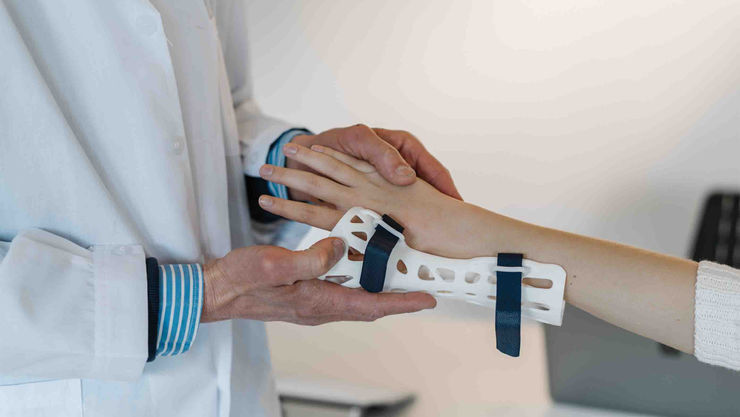3D Printing: HP Talks to 3D Ortho Pro

3D Ortho Pro recently had the opportunity to interview Petr Bártek at HP about their 3D printing capabilities and how they are changing the healthcare industry. In this blog post, we will discuss what 3D printing is, how it can be used in healthcare, and why more businesses are using it.
What is 3D Printing?
Many people often think 3D printing is a new technology, but it’s been around for over three decades.
In the 1980s there was an explosion of 3D printers in industry due to advancements in computer aided design (CAD) software and improvements with laser cutting machines that could divide metal or plastic sheets into complex shapes relatively cheaply.
Today, 3D printers are used in an array of industries such as aerospace, healthcare, automotive and pharmaceuticals.
How can 3D Printing be used for Healthcare?
In the past decade there has been a change to patient-specific solutions with the introduction of computer aided manufacturing (CAM) software. In addition to this, more people have started using 3D printing to make prosthetic limbs for people who need them.
In order to create a customized prosthetic limb, first an image of the person’s amputated body part is taken with multiple angles and then fed into CAM software before 3D printing starts.
3D Printing in Healthcare
3D printing in the healthcare industry is very new and its potential benefits are huge.
The process of 3D printing has the potential to create custom devices or implants for patients that need them, so they no longer have to wait on long lists or go through painful surgeries.
HP’s multi jet fusion technology is opening up a lot of doors for 3D printing in healthcare. This technology is capable of producing very intricate models, prototypes, and implants that may not be possible with other technologies.
HP’s printers can also print at speeds similar to injection moulding and traditional prototyping tools much faster than any other additive manufacturing process on the market today which means they are able to produce parts in a fraction of the time it would take other 3D printing technologies.
The technology is also being used by medical device manufacturers for applications like dental, surgical instruments and implants, hearing aids, vascular systems and orthotics/prosthetics like our very own 8sole and Raptor Mask products.
What are some Benefits to using 3D Printing in Healthcare?
There are many benefits to using 3D printing in the medical field including shorter development cycles, improved design and lower costs of production. With the 3D printing process, orthopaedic doctors can see a patient’s bone in 3 dimensions and precisely plan for what needs to be done.
After the design is finalized, they could print out a model of the implant that would allow them to perform surgery without needing many different types of materials or tools.
Another benefit is that it reduces reliance on other, more expensive manufacturing processes. 3D printers can be programmed to create custom implants that would otherwise require a lot of time and money, which lowers the need for mass production devices.
HP’s multi jet fusion technology is also capable of printing at speeds similar to injection moulding and traditional prototyping tools much faster than any other additive manufacturing process on the market today which means they are able to produce parts in a fraction of the time it would take other 3D printing technologies.
How Reliable is HP’s 3D Printing
HP’s 3D printing technology is very reliable and has been proven to be cost effective for the medical device industry. They have a number of different printers that can create nearly any product you need, with high precision accuracy and production speeds up to 300 mm per second.
The Future of HP 3D Printing
HP is committed to 3D printing in healthcare and not only does it want the technology to be a benefit for people with disabilities, they also envision that their printers will one day print blood vessels.
The company has been working on developing new materials like ceramic composite which could revolutionize how we do surgery because patients may no longer need external stitches or prosthetics.
HP also believes they can help people with disabilities do things that may have been impossible before, like giving amputees the ability to feel textures and objects through 3D printed prosthetics which would give them more independence in their life.
3D printing is an exciting, innovative technology that’s already changing the world in a variety of ways. It’s being used to create new products and support people with disabilities and deformities.
As more businesses are incorporating 3D printing into their operations, we’re excited about what this means for future innovation as well as the possibilities it creates across many industries.